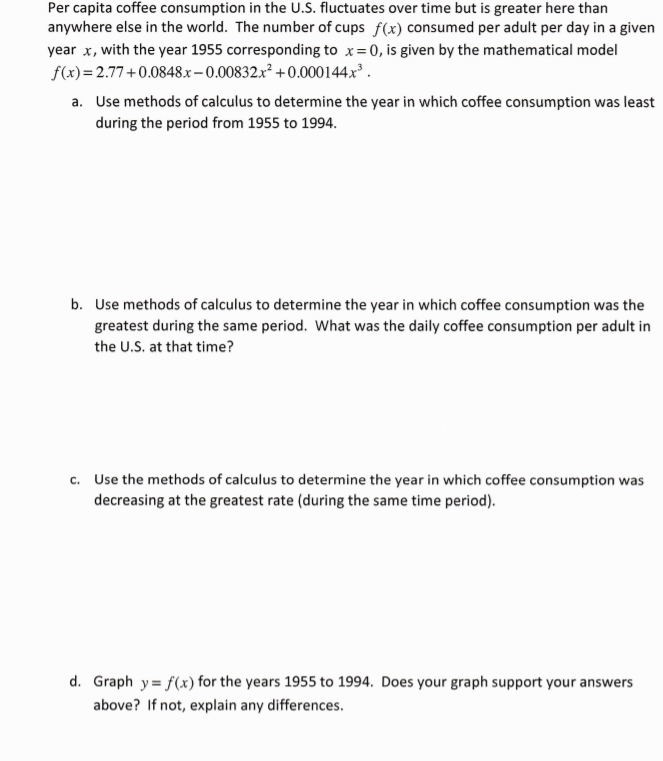Per capita coffee consumption in the U.S. fluctuates over time but is greater here than anywhere else in the world. The number of cups f(x) consumed per adult per day in a given year x, with the year 1955 corresponding to x=0, is given by the mathematical model f(x)=2.77+0.0848.x-0.00832x² + 0.000144x³ . a. Use methods of calculus to determine the year in which coffee consumption was least during the period from 1955 to 1994. b. Use methods of calculus to determine the year in which coffee consumption was the greatest during the same period. What was the daily coffee consumption per adult in the U.S. at that time? c. Use the methods of calculus to determine the year in which coffee consumption was decreasing at the greatest rate (during the same time period). d. Graph y= f(x) for the years 1955 to 1994. Does your graph support your answers above? If not, explain any differences.
Permutations and Combinations
If there are 5 dishes, they can be relished in any order at a time. In permutation, it should be in a particular order. In combination, the order does not matter. Take 3 letters a, b, and c. The possible ways of pairing any two letters are ab, bc, ac, ba, cb and ca. It is in a particular order. So, this can be called the permutation of a, b, and c. But if the order does not matter then ab is the same as ba. Similarly, bc is the same as cb and ac is the same as ca. Here the list has ab, bc, and ac alone. This can be called the combination of a, b, and c.
Counting Theory
The fundamental counting principle is a rule that is used to count the total number of possible outcomes in a given situation.
I only need part D answered.
The answers for a-c are:
A = 569.140502
B = 367.212757
C = 31.4764215

Trending now
This is a popular solution!
Step by step
Solved in 4 steps with 1 images









